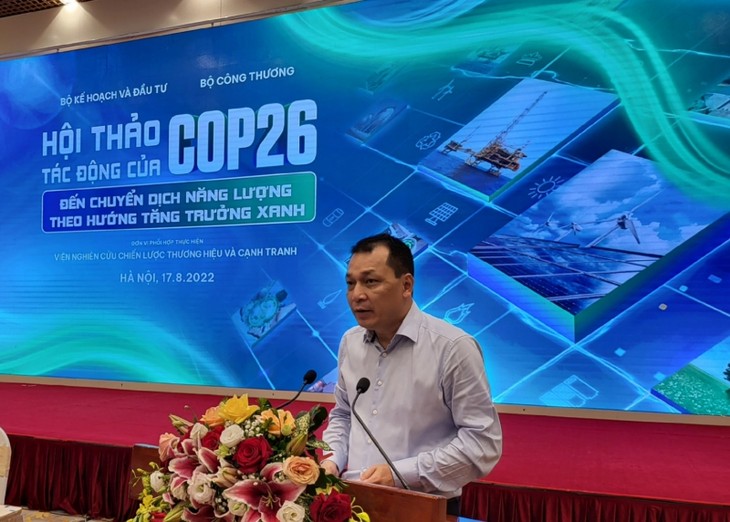(VOVWORLD) -Vietnam has witnessed the rapid development of renewable energy, especially wind power and solar power over the past 3 years. Currently, electricity from renewable energy in Vietnam accounts for 52.2% of installed capacity nationwide.
 The seminar "Impact of COP 26 on energy transition towards green growth", August 17, 2022, Hanoi. Photo: VOV The seminar "Impact of COP 26 on energy transition towards green growth", August 17, 2022, Hanoi. Photo: VOV
|
Addressing a workshop on Wednesday in Hanoi on “Impact of COP 26 on energy transition towards green growth”, Deputy Minister of Industry and Trade Dang Hoang An praised Vietnam’s strong efforts towards the goal of becoming a high-income country by 2045, which he said will make Vietnam’s demand for energy and electricity to grow rapidly. Along with the goal of ensuring energy security, Vietnam is also building a strong energy transition by 2050.
Therefore, he said, building a sustainable and feasible energy development and transition strategy suitable to socio-economic development conditions is the most important condition today. The two most important goals at present are to ensure energy security in the medium and long term to meet development goals, and at the same time, ensure access to energy for people and the economy at low cost reasonable and suitable to Vietnam’s development conditions and actual capabilities.
“To achieve these goals, we should identify optimum and sustainable energy structure while strongly attracting investment in energy infrastructure with a focus on greener and cleaner energy, renewable energy and new primary sources of energy, better efficient consumption and less electricity intensive economy,” said the Deputy Minister of Industry and Trade.
Speaking in the event, Deputy Minister of Planning and Investment Nguyen Thi Bich Ngoc said that green and clean energy transition is an inevitable and irreversible trend.
To concertize the national green growth strategy, on July 22, 2022, the Prime Minister approved the national action plan on green growth from 2021 to 2030 with four important goals: Reducing the intensity of greenhouse gas emissions per GDP; greening economic sectors; greening lifestyles and promoting sustainable consumption; and greening the transition on the principles of equality, inclusion, and resilience.